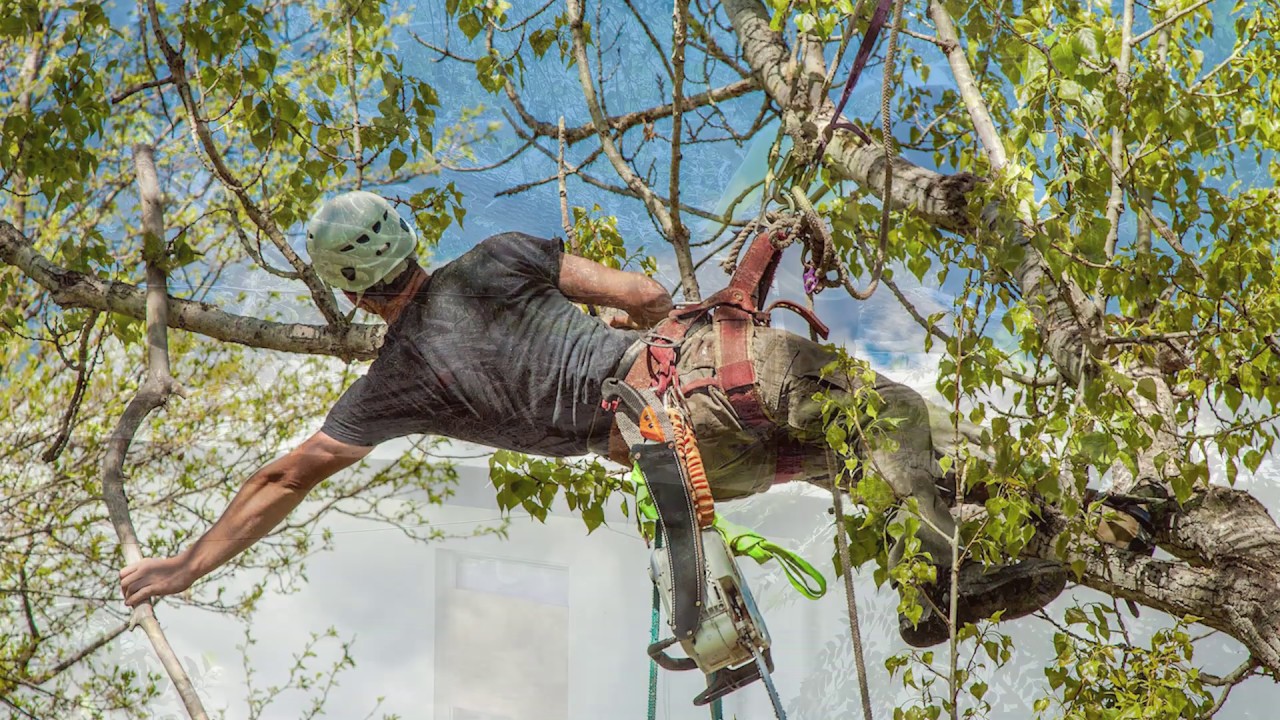Removing a tree might look straightforward from the outside, but in reality, it is one of the most dangerous tasks in garden and landscape management. Each year across the UK, homeowners and even inexperienced contractors face injuries, property damage, and legal complications from unsafe tree work. Whether it’s a towering oak blocking sunlight or a diseased tree threatening to fall, understanding the right tree removal safety guidelines is critical—especially in built-up areas like Wolverhampton, where space is limited and public safety is at stake.
Why Safety Matters in Tree Removal
Tree removal is not simply about cutting wood. It involves working at height, handling powerful tools, and predicting how tonnes of timber will react when felled. According to the Health and Safety Executive (HSE), arboriculture remains one of the highest-risk industries in the UK, with chainsaws alone responsible for thousands of accidents annually. For residents of Wolverhampton, where trees often sit close to houses, roads, and power lines, a single mistake can cause serious harm or costly damage.
Professional tree surgeons follow strict methods not just for efficiency but also for safety. That’s why calling in a certified arborist is usually the smartest—and safest—decision.
Assessing the Site Before Work Begins
Every safe tree removal project begins with a thorough site assessment. Professionals look at the tree’s size, species, and health. A decaying trunk, for example, may not fall the way you expect, while overextended branches could snap mid-cut. In Wolverhampton’s suburban gardens, tree roots are often entangled with fences, patios, or driveways, which can complicate stump removal later.
A risk assessment also considers:
- The tree’s proximity to roads and neighbouring properties.
- Overhead hazards such as power lines or unstable branches.
- Access for equipment, from climbing gear to stump grinders.
By mapping out these risks, professionals can put control measures in place, from safety ropes to exclusion zones that keep bystanders clear.
Using the Right Equipment for Safety
Attempting tree removal with a handsaw or DIY ladder is not only unsafe but often ineffective. Qualified tree surgeons use specialist equipment that makes the job faster and safer. Chainsaws, climbing harnesses, helmets with face shields, and high-strength ropes are all standard tools.
For larger projects like site clearance, where multiple trees and shrubs must be removed, mechanical equipment such as wood chippers and stump grinders are brought in. Wolverhampton homeowners may also encounter situations where stump removal is essential for future landscaping—whether that’s laying new turf, building a patio, or carrying out hedge trimming for a cleaner finish.
The correct use of this equipment requires training, which is why relying on professionals ensures both safety and efficiency.
Step-by-Step Safety in Tree Removal
Professional tree surgeons in Wolverhampton follow a structured approach when handling removals:
Step 1: Establishing a Safe Work Zone
Before any cut is made, the area around the tree is cordoned off. This prevents accidents involving falling branches or flying debris.
Step 2: Controlled Cutting
Rather than hacking through the trunk, arborists use precise techniques like directional felling cuts. These methods help control the fall and reduce risks to property and people.
Step 3: Sectional Dismantling
In built-up areas where space is tight, trees are often removed in sections. Climbers cut and lower branches piece by piece with ropes, ensuring safety even in confined gardens.
Step 4: Stump Removal and Clean-Up
Once the trunk is down, stump grinding ensures the area is safe, tidy, and ready for re-use. This step is particularly important if the garden will be replanted or landscaped after removal.
Legal and Environmental Considerations
In Wolverhampton, as across the UK, certain trees may be protected under Tree Preservation Orders (TPOs) or conservation area restrictions. Removing or even pruning such trees without permission can result in hefty fines. Before proceeding, always check with the local council.
Environmentally, professionals also ensure waste is disposed of responsibly. Branches and woodchips may be recycled into mulch, while logs can be repurposed for firewood. This reduces environmental impact while keeping gardens clean.
Common Mistakes Homeowners Make
One of the biggest risks comes from underestimating how unpredictable trees can be. A tree leaning slightly may seem manageable, but hidden rot could cause it to collapse in the wrong direction. Another mistake is assuming hedge trimming or small branch cutting requires no safety precautions—yet falls from ladders remain a leading cause of garden accidents.
DIY attempts at tree removal in Wolverhampton have also led to damage to fencing, smashed conservatories, and even injury to neighbours’ property. The lesson is clear: without the right knowledge, tools, and planning, it’s simply not worth the risk.
Why Professional Help Is the Safer Choice
Hiring a qualified arborist is not just about convenience; it’s about safety, compliance, and long-term value. Professionals are trained to British Standards (BS3998:2010 for tree work), carry insurance, and know how to navigate both technical and legal challenges.
For Wolverhampton homeowners, professional services often include:
- Tree removal carried out safely and efficiently.
- Stump removal to prepare land for future use.
- Hedge trimming for neat boundaries.
- Site clearance for construction or landscaping projects.
Beyond the immediate task, expert advice can also help prevent future risks—such as spotting early signs of disease or instability in nearby trees.
Conclusion: Stay Safe, Stay Smart
Tree removal is not just a task—it’s a responsibility. The combination of heavy timber, dangerous tools, and unpredictable outcomes makes it one of the riskiest jobs in any garden. By following proper tree removal safety guidelines—from site assessment to legal compliance—you can protect not only your property but also your family and community.
For homeowners in Wolverhampton, the safest choice is always to seek professional support. If you’re considering tree removal, stump removal, hedge trimming, or site clearance, get in touch with a trusted local arborist who can carry out the work safely and responsibly.
Ready to make your garden safer and more usable? Contact our Wolverhampton tree specialists today for a free consultation and expert advice.


Comments are closed